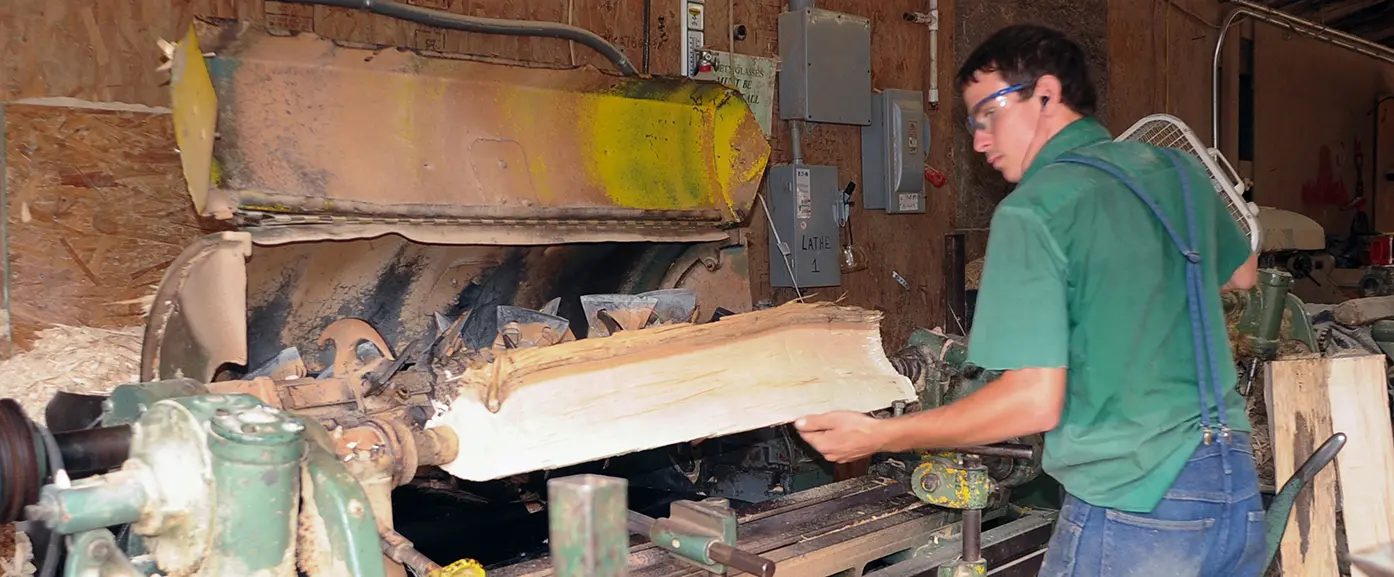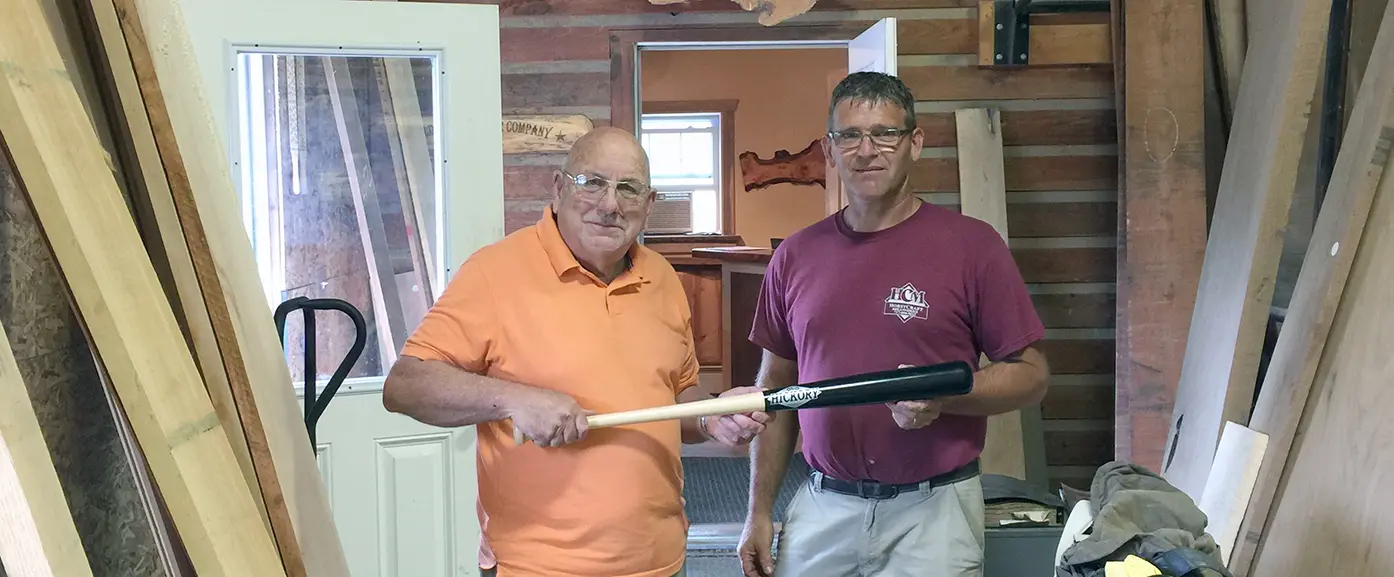
Written by Art Petrosemolo
In mid-July while spending a rainy Friday morning talking to Ben Shirk at his sawmill in East Earl, I learned about Alderfer Lumber in Mt. Pleasant Mills, Pa., some 40 miles north of Harrisburg. Ben said, “Art, you’ve got to meet John Alderfer, he makes bat billets for Old Hickory in Tennessee and they turn them into bats for major league baseball players.”
Heck yea, I said. I’m a baseball fan. Who wouldn’t want to learn how baseball bats are made? If I was going to make the 90-mile trip to Alderfer, I needed a newspaper or media outlet to run the story I would write. I reached out to the Pittsburgh Post-Gazette, a major regional newspaper, who has a Sunday section called The New Page that runs off-beat stories on subjects like this. They loved the idea so I was good to go. A few years back I had done a story for them on the iconic ocean liner – the SS United States – rusting at a pier in Philadelphia.
I asked carpenter Mike Fisher to tag along. John Alderfer has been operating the sawmill/lumber company for the past 20 years.
John had been supplying hardwood billets to a small bat manufacturer in Philadelphia for years so he had the expertise when Old Hickory Bat Company in Tennessee came calling a few years ago when they needed a new supplier. Old Hickory has Los Angeles Angels’ Mike Trout, MVP and baseball all-star on their list of players. Old Hickory started in 1999 in the garage of Chad Lamberth’s grandmother’s home. It has grown quickly.
Learning about this niche business was interesting to say the least. Birch, ash, and now maple are the woods of choice for manufacturers to use in fashioning bats for the major leagues. Alderfer fashions about 40,000 billets a month that get turned into bats by Old Hickory.
But these high-end bats don’t just pop out of the 60-log shipments that arrive at the mill twice a week. It’s a labor intensive, exacting process. One that takes time, attention to detail and continuous quality checks along the way.
For decades, ash was the wood of choice for bat manufacturers. But in recent years the Emerald Ash Borer has just about wiped out the species with fewer and fewer trees available for harvest. Plus, ever since Barry Bonds used a maple bat to set the home run record in 2001, maple has been the wood of choice.
In the mid-1880s, some forty years after Abner Doubleday invented the game, baseball players still fashioned what they called their striker-stick with hand tools out of any wood they could find, including ax handles and wagon spokes. Bats were made in all shapes. They could be round or flat, long or short, heavy or light.
In 1884, the first custom bats were fashioned by Bud Hillerich out of his dad’s woodshop. Legend says one of his creations helped turn around a slumping local player and manufactured bats soon were in demand. Today, more than 100 years later, Hillerich’s business, the Louisville Slugger Co., is the leading manufacturer of baseball bats in the U.S.
At Alderfer, fashioning the billet which will become a MLB bat valued at $100 or more starts primarily with maple logs. The logs are inspected right off the truck. Rejected logs are set aside before the remainder enter the production line. The logs are first debarked and then sawed into 40-inch lengths. Some 900 billets will come from a 40,000-pound delivery and only 15% of those are probably good enough for a number one grade. Billets with a number one grade eventually become the bats in the hands of MLB players.
The logs are split with the grain into triangular wedges. Some logs are rejected right at the splitter for defects and other reasons before they move onto the Madison lathe. During the lathe turning, the corners are removed from the wedges and a forty-inch round, 15-20 pound billet emerges. Even the discovery of a defect as small as a quarter-inch at this stage of production can disqualify a billet as a candidate for the top grade.
A quality bat must have a perfect handle as that is the most important part of the bat, so the first 21-inches of the billets are inspected again very carefully. The finished billet – 40-inches long and three-and-a-quarter inches in diameter – then receives a final grade at the mill. Its ends are sealed with wax against moisture before being bundled for shipping to a Missouri company which kiln dries the billets, refines them further on a dowel maker and gives all a final grade before sending them on their way to Old Hickory.
Baseball players are superstitious and can be stubborn. They might stay with a particular bat for a variety of reasons that only make sense to them. There are no baseball bat expos for players to test the latest bats (at least not yet) so players talk amongst themselves or might try a new bat used by a player who has had recent success. It may be a science to manufacture bats but for the top players it comes down the bat that just feels good in their hands.
